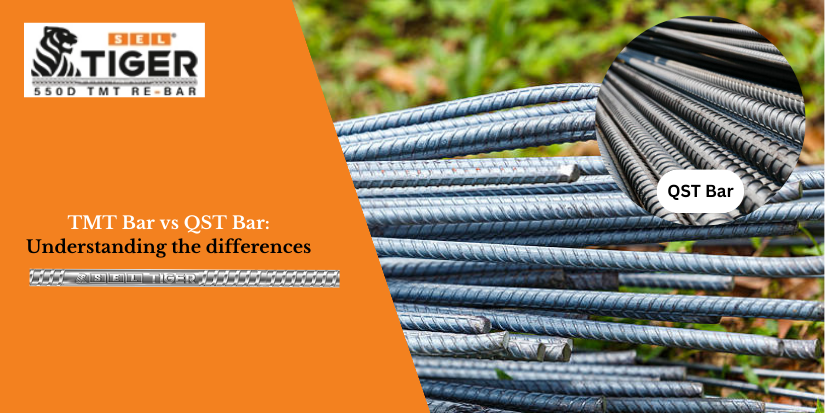
Structural integrity is of paramount importance in the construction sector. As a result, the choice of building material is key for the consumer while making the purchase. The options available in building materials are plenty; TMT or Thermo-mechanically treated Bars and QST or Quenched and Self-Tempered Bars are two of the most viable contenders. Since the disparities can tend to be subtle between the two, architects, builders and household owners often fail to figure out the differences while going for the buy. This article aims to unravel these differences and shed light on what the preferred choice should be for buyers while planning their dream projects.
Known for their exceptional strength and resilience, TMT Bars are popularly claimed to be the no 1 building material for the construction of huge skyscrapers, large-scale projects as well as residential buildings. Produced through heat treatments and rapid quenching, they have superior mechanical properties as compared to other steel bars. Integrated with high tensile strength, ductility and weldability, TMT Bars ensure that every building project meets the international standards for strength and durability. Renowned as the latest innovations in the construction industry, their unique microstructure where a soft ferrite core combines a rough and hard outer surface, makes them stand apart from all traditional steel bars as the one having the longest lifespan. This, as a result, besides safety, also guarantees to bring down the maintenance costs in the long run.
QST or Quenched & Self Tempered Barson are not Thermo mechanically treated but undergo a similar heat treatment with respect to their counterparts. This results in enhanced ductility and bendability, making them ideal for applications where flexibility is the highest priority. Consisting of a hard-tempered martensite (TM) peripheral ring and a ductile ferrite pearlite core, these bars although poor with cross sections, exhibit good ductility and bend stress coping. Traditionally they have been used widely for projects where intricate designs occupy a central role.
Although both QST and TMT Bars are meant to uplift the structural integrity of building structures, they can be easily distinguished because of their properties and manufacturing processes. Here are some of the key points:
SEL Tiger is now India’s leading TMT Bar Supplier, producing TMT Bars that ensure maximum consistency and reliability for customers. Adhering to stringent quality control, every Thermo Mechanically Steel Bar we produce is built with state-of-the-art technology and cutting-edge innovations. Delivering unmatched quality and performance, our bars come with a special rib design, thus making us the preferred choice over others. SEL Tiger TMT bars are more cost-effective than other steel bars. Our Fe415 to Fe600 offer superior load-bearing capabilities which allow them to be used economically. This makes you save a lot more than what you would if you go for normal steel bars. Being a responsible brand, all our products incorporate eco-friendly practices to ensure that an industry like construction has as little environmental impact as possible.
Read Also: TMT Bar vs TOR steel Bars: which one is better for earthquake-prone construction?
TMT Bars are now the preferred choice in all scenarios. Because of their incredibly high tensile strength, durability and corrosion resistance, they are now prioritised over all building materials for residential projects and infrastructural works of both small and large scales.
You can find a widespread usage of these steel bars in areas that are earthquake-prone and in projects where flexibility is key.
The main difference has to be the superiority. Because TMT Bars undergo annealing unlike QST Bars, they are not just strong, durable and ductile, but also earthquake and corrosion-resistant. Thus, now even in areas that are prone to earthquakes and corrosion, TMT Bars easily become the best construction material choice for all consumers.